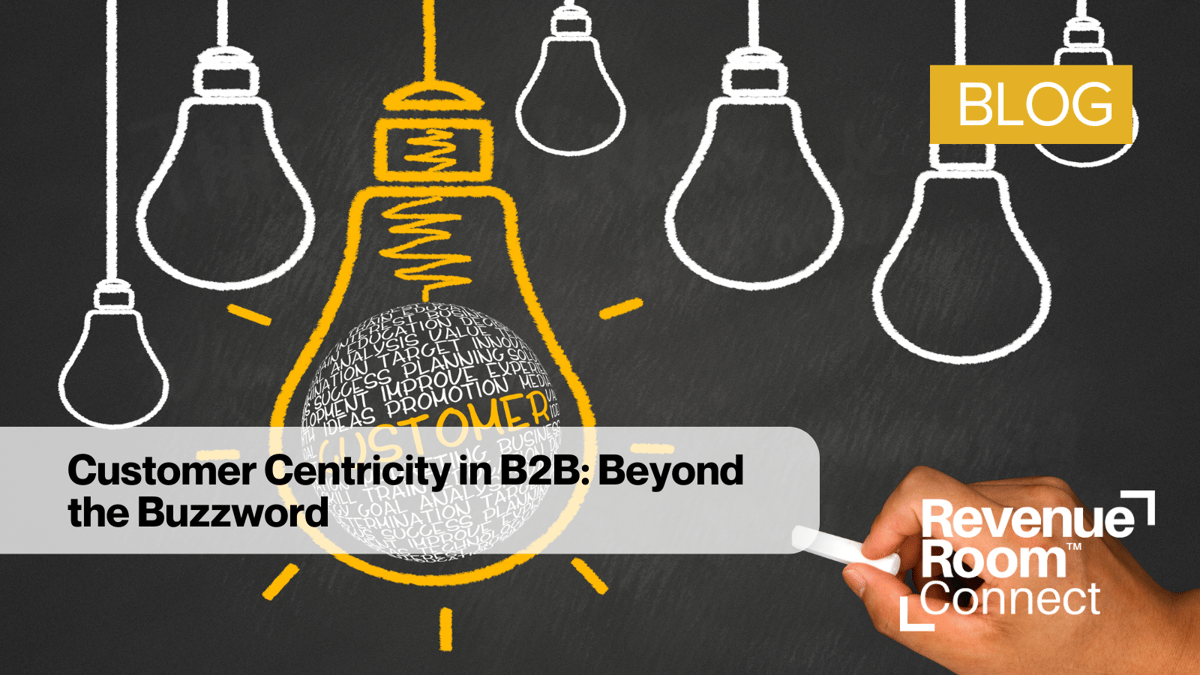Customer Centricity in B2B: Beyond the Buzzword
Transforming customer-centricity from a catchphrase to a competitive advantage in complex B2B environments
The Reality Check
"If your CEO talks a big game about customer-centricity but doesn't visit with customers, attend your events, or actively engage with attendees and audience members, I don't think you can say your company is truly customer-centric. That's a very quick litmus test." - Heather Holst-Knudsen
In today's business landscape, "customer centricity" has become ubiquitous in corporate messaging. Yet, while 80% of companies believe they deliver superior customer experience, only 8% of their customers agree (Bain & Company). This disconnect reveals a crucial gap between intention and execution.
The Business Case for True Customer Centricity
The numbers tell a compelling story:
- Companies excelling in customer experience grow revenues 4-8% above market average (Bain & Company)
- Customer-centric organizations are 60% more profitable than their counterparts (Deloitte)
- Customers willingly pay a 16% premium for exceptional service (PwC)
- A mere 5% increase in customer retention can boost profits by 25-95% (Harvard Business Review)
The Complexity of Multi-Sided Business Models
For B2B media companies, event organizers, and marketplace operators, customer-centricity presents unique challenges. These businesses must:
- Balance multiple customer segments simultaneously
- Maintain value proposition alignment across different stakeholders
- Navigate interdependent relationships between buyers and sellers
- Create seamless experiences across diverse channels and touchpoints
Common Pitfalls in Customer Centricity Implementation
1. The Leadership Disconnect
- CEOs and executives who champion customer-centricity but rarely engage with customers
- Lack of personal involvement in customer feedback and issue resolution
- Missing alignment between leadership messaging and organizational priorities
2. The Action Gap
- Extensive data collection without meaningful follow-through
- Customer feedback that disappears into the void
- Absence of clear accountability for addressing customer concerns
3. The Segment Imbalance
Two dangerous approaches:
- Advertiser-Led: "Bring in the dollars, we'll get the audience later"
- Audience-Led: "Build the audience, and advertisers will follow"
Neither works in isolation. Success requires careful balance and simultaneous value creation for all stakeholders.
Building a Sustainable Customer-Centric Organization
1. Leadership That Walks the Talk
- Executive engagement in customer interactions
- Regular customer feedback reviews at the leadership level
- Customer-centric metrics in executive scorecards
2. Data-Driven Decision Making
- Single source of customer truth
- Integrated view across touchpoints
- Real-time feedback mechanisms
- Action-oriented analytics
3. Cross-Functional Alignment
- Shared customer success metrics
- Collaborative problem-solving
- Integrated customer experience design
- Joint accountability for outcomes
4. Systematic Implementation
- Clear roadmap with measurable milestones
- Regular progress assessment
- Capability building over time
- Continuous improvement cycles
Moving Forward
Customer centricity isn't a destination but a journey of continuous evolution. Success requires:
- Understanding your current position
- Defining your desired future state
- Building capabilities incrementally
- Maintaining balance between customer needs and business sustainability
- Creating measurable value for all stakeholders




